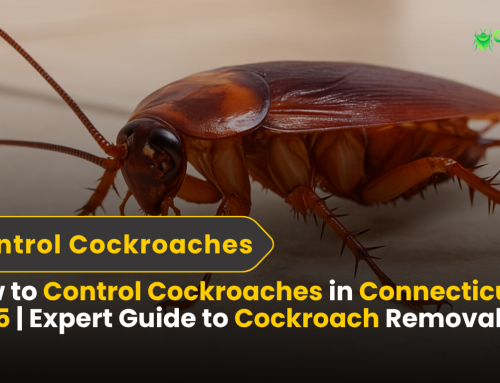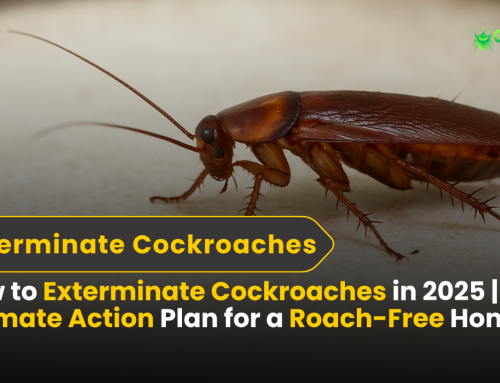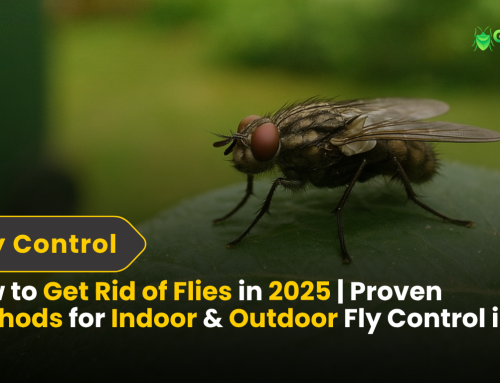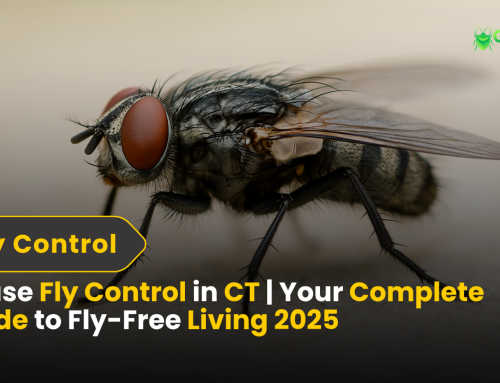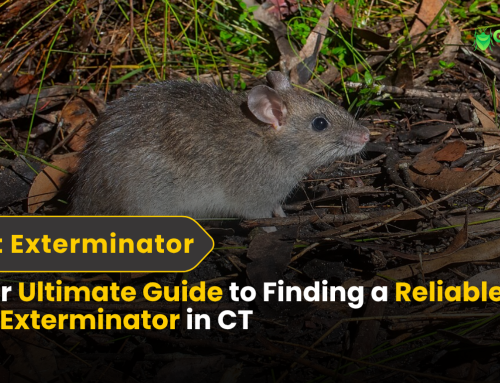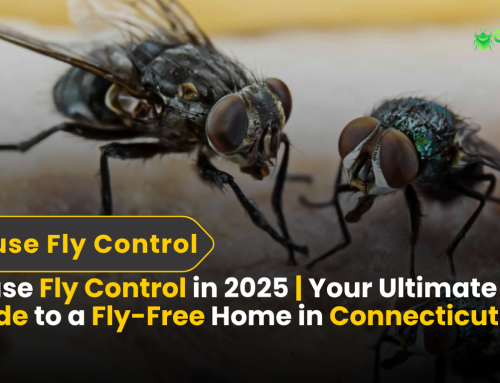Eliminating Ground Hornets Within a Month: A 30 Days Plan Guide
Ground hornets, commonly known as yellow jackets, are aggressive social insects that build their nests underground, often in abandoned rodent burrows. These nests pose a significant threat to humans and pets due to the potential for painful and potentially dangerous stings. Yellow jackets are highly territorial and will aggressively defend their nests when disturbed. If you encounter a ground hornet nest on your property, it’s crucial to take prompt action to eliminate the threat. This guide will outline effective strategies for eradicating ground hornet infestations within a month, combining professional advice with practical DIY methods.
Understanding The Behavior of Ground Hornets
Colony Structure:
Ground hornets are highly social insects, living in complex, well-organized colonies.
1. Queen’s Role:
At the heart of every colony is a single queen. She is responsible for:
-
- Reproduction: The queen lays eggs that will become the next generation of hornets.
- Colony Growth: She oversees the construction of the nest and the division of labor among the workers.
- Colony Survival: The queen’s primary objective is to ensure the survival of the colony and the continuation of the species.
2. Worker Roles:
The majority of the colony consists of worker hornets, which are all female. They perform various essential tasks, including:
-
- Foraging: Searching for food, such as insects, nectar, and sugary substances.
- Nest Construction: Expanding and maintaining the nest.
- Brood Care: Feeding and protecting the developing larvae.
- Nest Defense: Aggressively defending the nest from threats, including predators and intruders.
3. Aggressive Defenders:
- Territorial Behavior: Ground hornets are fiercely territorial and will aggressively defend their nest from any perceived threat.
- Stinging Response: When threatened, they will readily sting multiple times, injecting venom into their target.
- Sting Pain: Ground hornet stings are extremely painful, often described as burning and throbbing.
- Allergic Reactions: In some individuals, ground hornet stings can trigger severe allergic reactions, including anaphylaxis, which can be life-threatening.
4. Life Cycle:
- Spring Activity: In the spring, the overwintered queen emerges from hibernation and begins searching for a suitable location to build her nest.
- Nest Construction: The queen initiates nest construction, often utilizing abandoned rodent burrows. She constructs a series of papery cells within the nest to house her eggs and larvae.
- Colony Growth: As the summer progresses, the queen lays eggs that hatch into worker hornets. The colony gradually grows in size as more and more workers are produced.
- Peak Activity: The colony typically reaches its peak population size in late summer or early fall.
- Colony Decline: As winter approaches, the colony begins to decline. Worker hornets die off, and the queen’s egg-laying activity diminishes.
- Overwintering Queens: Only fertilized female queens survive the winter. They seek sheltered locations to hibernate and emerge in the spring to start new colonies.
Understanding these aspects of ground hornet behavior and life cycle is crucial for effectively managing and eliminating infestations. By recognizing their social structure, aggressive nature, and seasonal activity patterns, you can implement more targeted and effective control measures
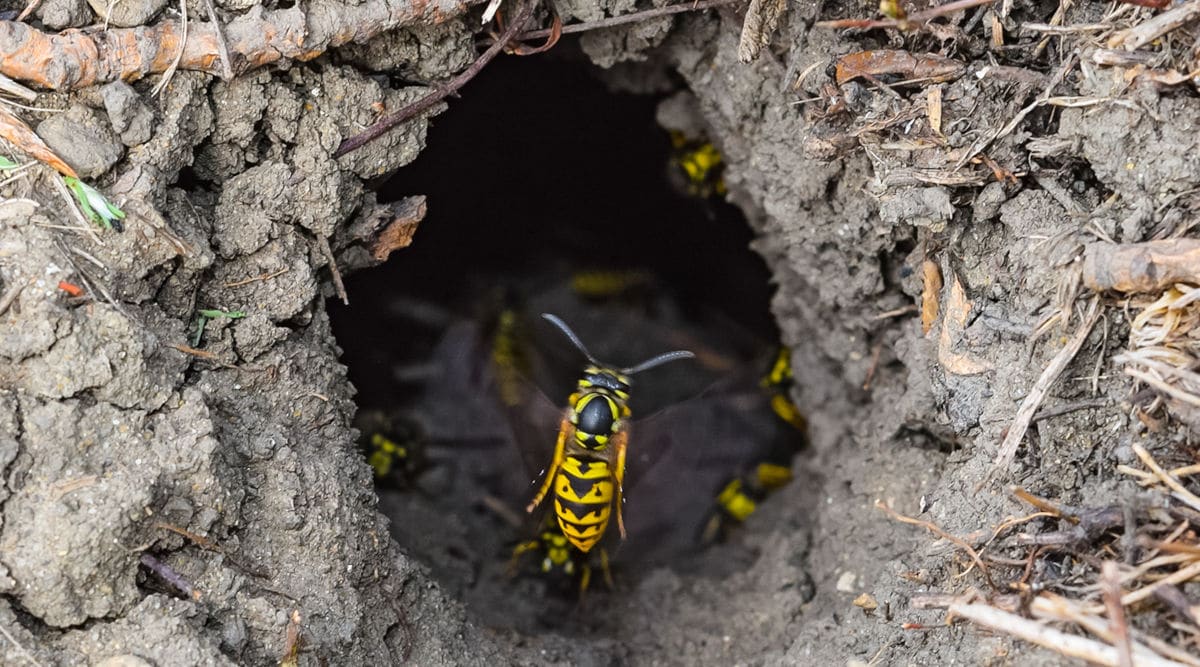
Key Considerations Before Taking Action
Before embarking on any ground hornet elimination strategy, consider the following:
- Safety First:
Prioritizing safety is paramount when dealing with ground hornets. These insects are highly defensive and will aggressively sting if they feel threatened. To minimize the risk of stings, it’s crucial to avoid disturbing the nest during peak activity hours, which typically occur between late morning and early evening.
Wearing appropriate protective gear is essential. This includes:
- Long sleeves and long pants: To cover exposed skin and minimize the area available for stings.
- Gloves: To protect your hands from stings.
- A veil or beekeeper’s hood: To protect your face, neck, and hair from stings.
It’s also advisable to wear sturdy shoes and avoid wearing perfumes or scented lotions, which can attract hornets.
- Professional Assistance:
If you’re feeling uneasy about handling the situation yourself, or if the ground hornets nest is large, inaccessible, or located in a challenging area, it’s best to contact a professional pest control service.
Professional exterminators have the expertise, experience, and specialized equipment to safely and effectively eliminate ground hornet nests. They possess:
- In-depth knowledge of hornet behavior and control methods.
- Access to professional-grade insecticides and equipment.
- Specialized safety gear and protective clothing.
Engaging a professional ensures that the nest is eliminated safely and efficiently, minimizing the risk of stings and potential property damage.
- Nest Location:
Carefully observing the nest’s location and activity patterns is crucial for determining the most effective elimination method and minimizing risks.
Key factors to consider include:
- Nest accessibility: How easily can you reach the nest entrance? Is it located in a safe and accessible area?
- Nest size and activity: How large is the nest? How active are the hornets?
- Surrounding environment: Are there any obstructions or hazards near the nest? Are there any nearby structures or people that could be at risk?
By carefully assessing these factors, you can choose the most appropriate elimination method and take the necessary precautions to ensure your safety and the safety of others.
04 Main Elimination Methods
Here are several effective methods for eliminating ground hornets within a month:
- Professional Pest Control:
- Benefits: Professional exterminators have the knowledge, experience, and specialized equipment to safely and effectively eliminate ground hornet nests. They use professional-grade insecticides and techniques that are often more effective than DIY methods.
- Process: A professional will typically inspect the nest and determine the best course of action. This may involve applying insecticides directly to the nest entrance, using dust formulations, or employing other specialized techniques.
- DIY Methods:
- Caution: DIY methods should be approached with caution and only undertaken by individuals comfortable with handling potentially dangerous situations. Always wear appropriate protective gear.
a) Insecticidal Dust:
-
- Application: Apply insecticidal dust directly into the nest entrance at dusk or early morning when hornets are less active.
- Effectiveness: Insecticidal dust can be effective in penetrating the nest and killing the hornets.
- Caution: Follow the product instructions carefully and avoid inhaling the dust.
b) Insecticide Sprays:
-
- Application: Use a long-range spray to apply insecticide directly into the nest entrance from a safe distance.
- Effectiveness: Aerosol sprays can be effective, but their range may be limited for ground nests.
- Caution: Avoid spraying yourself or others.
c) Hornet and Wasp Killer:
-
- Application: These ready-to-use sprays are designed to kill hornets and wasps on contact.
- Effectiveness: They can be effective for smaller nests or for controlling individual hornets.
- Caution: Follow the product instructions carefully and avoid inhaling the spray.
d) Diatomaceous Earth:
-
- Application: Sprinkle diatomaceous earth around the nest entrance. This natural substance kills insects by dehydrating them.
- Effectiveness: Diatomaceous earth may take longer to work than chemical insecticides.
- Caution: Avoid inhaling diatomaceous earth.
- Natural Repellents:
- Effectiveness: Natural repellents may deter hornets but may not eliminate them completely.
Options:
-
- Mint: Plant mint near the nest entrance. The strong scent may deter hornets.
- Citrus: Spray citrus peels around the nest entrance. The citrus scent may repel hornets.
- Essential Oils: Mix essential oils like peppermint or lemongrass with water in a spray bottle and spray around the nest entrance.
- Nest Destruction (Extreme Caution):
- Risk: This method is highly risky and should only be attempted by experienced individuals with proper safety equipment.
- Process: If the nest is accessible and the ground is soft, you may be able to carefully dig up the nest and dispose of it.
- Caution: This method should only be attempted if you are confident in your ability to do so safely and without disturbing the hornets.
Post-Elimination Steps
- Monitoring:
Even after successfully eliminating a ground hornet nest, it’s crucial to maintain vigilance.
- Signs of Return: Keep a close eye on the area for any signs of returning hornets, such as:
- Increased hornet activity in the vicinity.
- New signs of nest construction, such as digging or soil displacement.
- The presence of dead hornets near the former nest site.
- Prompt Action: If you notice any signs of returning hornets, promptly repeat the elimination process. Early detection and intervention are key to preventing a new colony from establishing itself.
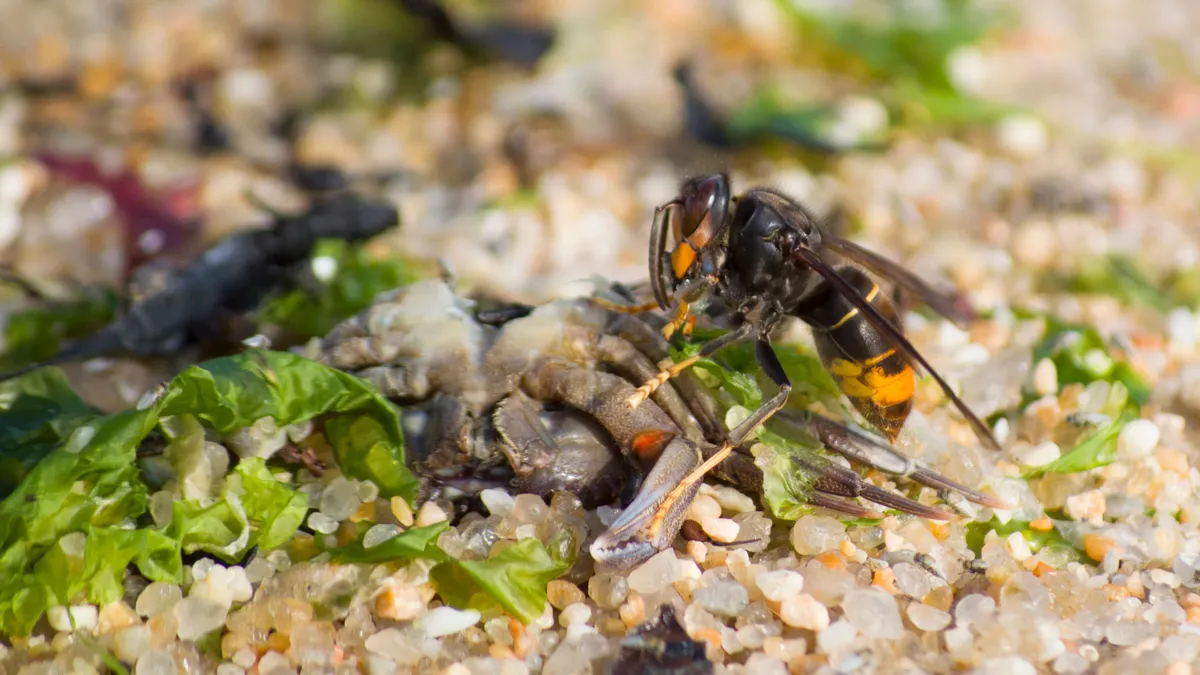
- Nest Removal:
Once you are certain that the nest is completely inactive and all hornets have perished, it’s advisable to remove the nest from the ground.
- Preventing Future Occupation: Removing the nest eliminates a potential nesting site for future generations of ground hornets.
- Disposal: Dispose of the nest carefully, ideally by placing it in a sealed plastic bag and discarding it in the trash.
- Preventive Measures:
Taking proactive steps to prevent future ground hornet infestations is crucial.
- Sealing Entry Points:
- Inspect the exterior of your home for potential entry points, such as cracks and crevices in the foundation, around windows and doors, and in siding.
- Seal these openings with caulk, expanding foam, or steel wool to prevent hornets from entering.
- Food and Garbage Management:
- Keep food and garbage securely stored in airtight containers.
- Clean up food and drink spills promptly.
- Regularly empty and clean trash cans to prevent attracting hornets.
- Attractive Nesting Sites:
- Remove potential nesting sites around your property, such as piles of wood, debris, or compost.
- Trim trees and shrubs away from the foundation of your home.
By implementing these post-elimination and preventive measures, you can significantly reduce the risk of future ground hornet infestations and create a safer environment for yourself and your family.
Conclusion
Ground hornets infestations can pose a significant threat to homeowners due to their aggressive nature and painful stings. By understanding their behavior, life cycle, and implementing effective control measures, you can effectively eliminate these pests and protect yourself and your family.
This guide has outlined various approaches to ground hornet elimination, ranging from professional pest control services to DIY methods. Remember to prioritize safety at all times and wear appropriate protective gear when dealing with these insects.
While DIY methods can be effective, professional assistance may be necessary for large or difficult-to-reach nests.
Key takeaways for successful ground hornet control include:
- Early Detection: Vigilant monitoring for signs of nest activity is crucial for early intervention.
- Safety First: Always prioritize your safety and the safety of others.
- Proper Equipment: Utilize appropriate protective gear, such as long sleeves, long pants, gloves, and a veil.
- Post-Elimination Measures: Continue monitoring for signs of reinfestation and take steps to prevent future infestations by sealing entry points and eliminating potential nesting sites.
By implementing these strategies and maintaining a vigilant approach, you can effectively eliminate ground hornet infestations and create a safer and more peaceful environment for yourself and your loved ones.

